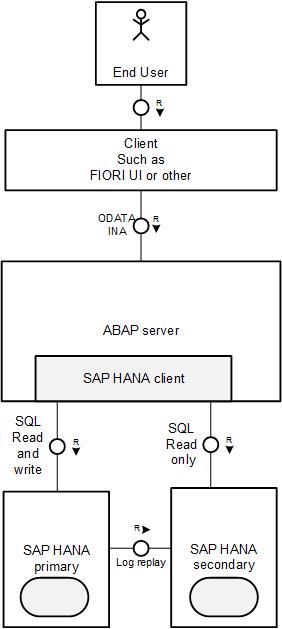Introduction
At SAP, we thought about creating additional benefit for customers who run SAP S/4HANA on premise.
Many of them in fact run two SAP HANA databases in a SAP HANA system replication setup: the productive SAP HANA database (aka the primary SAP HANA database), and an additional ‘hot standby’ SAP HANA database (aka the secondary SAP HANA database). The latter is part of their high availability strategy and allows business continuity in case of a failure of the primary SAP HANA node.
Transactional processes in SAP S/4HANA post data on the primary SAP HANA node only. The secondary SAP HANA node retrieves all data which are posted on the primary node by a technique called log replay. The original purpose of system replication is to store a redundant copy of any data change as quickly as possible – either synchronously (no delay) or asynchronously with a small time delay. With the Active/Active (read enabled) configuration, we now also prepare the data in memory for read access, which introduces a small delay. The data delay is typically one second up to 15 seconds, depending on the system workload.
So you as customer may operate two SAP HANA databases, one of which is idle for most of time.
The idea is now to make use of the idling resources of the secondary SAP HANA node also in the non-failover case: While transactional processes (read and write) of course cannot live with the few seconds delay, analytical applications (read only) often can.
So SAP developed an E2E architecture that allows to route expensive analytical queries to the secondary SAP HANA database. This is first available with SAP S/4HANA 1610, FPS01 and SAP HANA 2.0, SPS01.
SAP announced this so called Active/Active (read enabled) configuration in the What’s New document for SAP S/4HANA 1610, FPS01. To make use of the scenario, there is also an enablement of the respective applications required. A list of first apps supporting the scenario is available in SAP note 2405182 . So you as customer have the choice to use this scenario and redirect expensive analytical queries to the secondary SAP HANA node. This frees up resources on the primary SAP HANA node, allowing you to optimize the usage of your hardware investments.
With this blog series, I plan to share some experiences, backgrounds and best practices of the E2E architecture. This shall be useful for you as consultant, partner and customer to make optimized use of the Active/Active (read enabled) configuration.


No comments:
Post a Comment